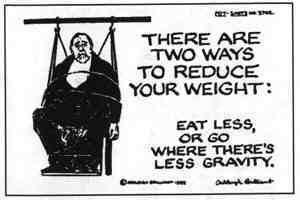
From "Maintaining the 'Semantic Edge' Verbal Judo tactics & techniques with Dr. George.
Thompson In Tactical Communication/Verbal Judo we make a major distinction between natural language and tactical language, the former being dangerous and unpredictable, the latter, safer and more professional.
Natural Language or "Verbal Karate," as I like to call it, is language used to hurt, to attack, or to express personal feelings where not appropriate.
"Verbal Judo" is tactical and re-directive language used to achieve a professional purpose.
In our on-going efforts to train officers to speak more professionally, we ourselves need to use language correctly. Too often police trainers use language loosely which misleads officers. Ideally we should all use similar words when describing the "job." For example, in academies we often stress that officers must be "aggressive". I heard this for months in my academy and then when I hit the streets and got a complaint, I was told I had been "too aggressive!" What does that mean? No one was ever able to explain that to me. I should have been told to be assertive, not aggressive. "Assertive" means to have a positive influence upon, while "aggressive" means to attack, to push ones personality upon another. Should an officer enter my home aggressively, he would meet righteous resistance. Don't, for example, tell me rudely, "Sit down!" I won't do that for anyone in my own home, and I suspect most people feel the same way. By contrast, an "assertive" officer would have said, "Sir, I know it's your home, but for your safety and mine could I ask you to have a seat so we can chat about the issue here?" The "could I ask you" phrase makes all the difference and I would sit. The officer would have had an "influence, a positive impact" upon me created by his respectful tone and request.
Connected to this semantic problem is the police truism I often hear officers relating: "Never Back Up" for it will be read as weakness by the wolves on the street." If one is not going forward, one is retreating backward. This "straight line" thinking is disastrous for two reasons:
- One, it leaves us but one option: go forward, even if we have blundered in our initial approach. I liken talking to the martial arts for several reasons, one of which is the flexibility suggested by the circular nature of the arts. Should we come on too strong in our approach with someone, for example, we don't back up, we simply change angle. We change the way we approach the subject, we master by adapting and improvising.
- Two, such advice does not allow us to tactically disengage should we not be capable of handling the situation in front us. Once we believe "Never Back Up," we are trapped, and our ego will get us hurt or killed.
Another critical semantic distinction is this one:. The "aggressive" officer RE-acts to events. The "assertive" officer RE-sponds. The prefix RE means to come back to, to return, so when we React, the act controls us. Reactive officers make mistakes because they are controlled by the action itself. Should an officer lose his temper and snap at someone, he is reacting to their attitude and behavior, letting them shape and control his behavior. The assertive officer, by contrast, REsponds, he re-answers rather than reacts, suggesting greater control. The root word of respond is the Latin 'respondere,' a verb meaning to answer. Communities want responsive officers--not reactive ones--working their streets.
Another confused set of words is sympathy & empathy, a confusion that in police work can be dangerous. The word sympathy means to share feelings with, to be in accord with, whereas empathy (EM from the Latin 'to see through,' and 'pathy' from the Greek meaning 'eye of other) means to understand as if you stood in the others shoes only momentarily.
In police work, we rarely sympathize with anyone, unless it be for a victim, but to maintain the tactical edge we always need to think like those we are dealing with if we are to anticipate their actions. Tactical Empathy is an officer's greatest skill!
And finally, consider the distinction between "anticipate" and "expect." To anticipate means to "see before hand and move to prevent." It would, for example, be good to anticipate a punch and move your head before such landed! The word expect means to "wait for," suggesting greater rigidity of response. Expect a left to the face, for example, and you will get hit with a right or kneed in the groin! Indeed, if you want to test the rigidity of "expect," try this: Approach three people on the corner and expect the one on the right to give you the most trouble. Within two minutes, the one on the right is in fact the most troublesome! We know from acting research that audiences reflect back to you what you put out three times in intensity! When you expect trouble, you generate it! In short, the trained officer is assertive, not aggressive, he responds but never reacts, and because he employs tactical empathy rather than sympathy, he is able to anticipate trouble and move to prevent it, rather than expecting it and causing it! A mouthful, I know, but words do make a difference, and I urge us all to use the same words the same way when we train officers.
Such clarity cuts down on confusion and gives officers a clear idea of how they should perform in the field.
===================
Dr. George J. Thompson is the President and Founder of the Verbal Judo Institute, a tactical training and management firm based in Auburn, NY. He has trained more than 175,000 police officers and his Verbal Judo course is required in numerous states.
Doc has created the only "Tactical Communication" course in the world and he has written four books on Verbal Judo, each analyzing ways to defuse conflict and redirect behavior into more positive channels. The Verbal Judo Institute, offers Basic & Advanced courses in the Tactics of Verbal Judo. Doc received his B.A. from Colgate University (1963), his Masters and Doctorate in English from the University of Connecticut (1972), and he completed post-doctoral work at Princeton University in Rhetoric & Persuasion (1979). Widely published in magazines and periodicals, his training has been highlighted in such national media outlets as NBC, ABC, & CBS News, CNN, 48 Hours, Inside Edition, LETN, In the Line of Duty, and Fox news, as well as in the LA Times, NY Post, Sacramento Bee, and other publications.
On a personal note, Doc and Pam are the proud parents of three-year old, Tommy Rhyno Thompson, and Doc, a survivor of throat cancer, has returned to active teaching. He currently offers VJ training on the internet, and has two more books forthcoming, Verbal Judo Leadership: The Hard Right (with Gregory Walker), and Hammett's Moral Vision. You can contact Doc at VJI, Inc., 2009 W. Genesee St. Rd., Auburn, NY 13021, 315-253-0007.
« Last Edit: May 31, 2006, 21:25:30 by Hock http://hockscombatforum.com/



